Springing to life
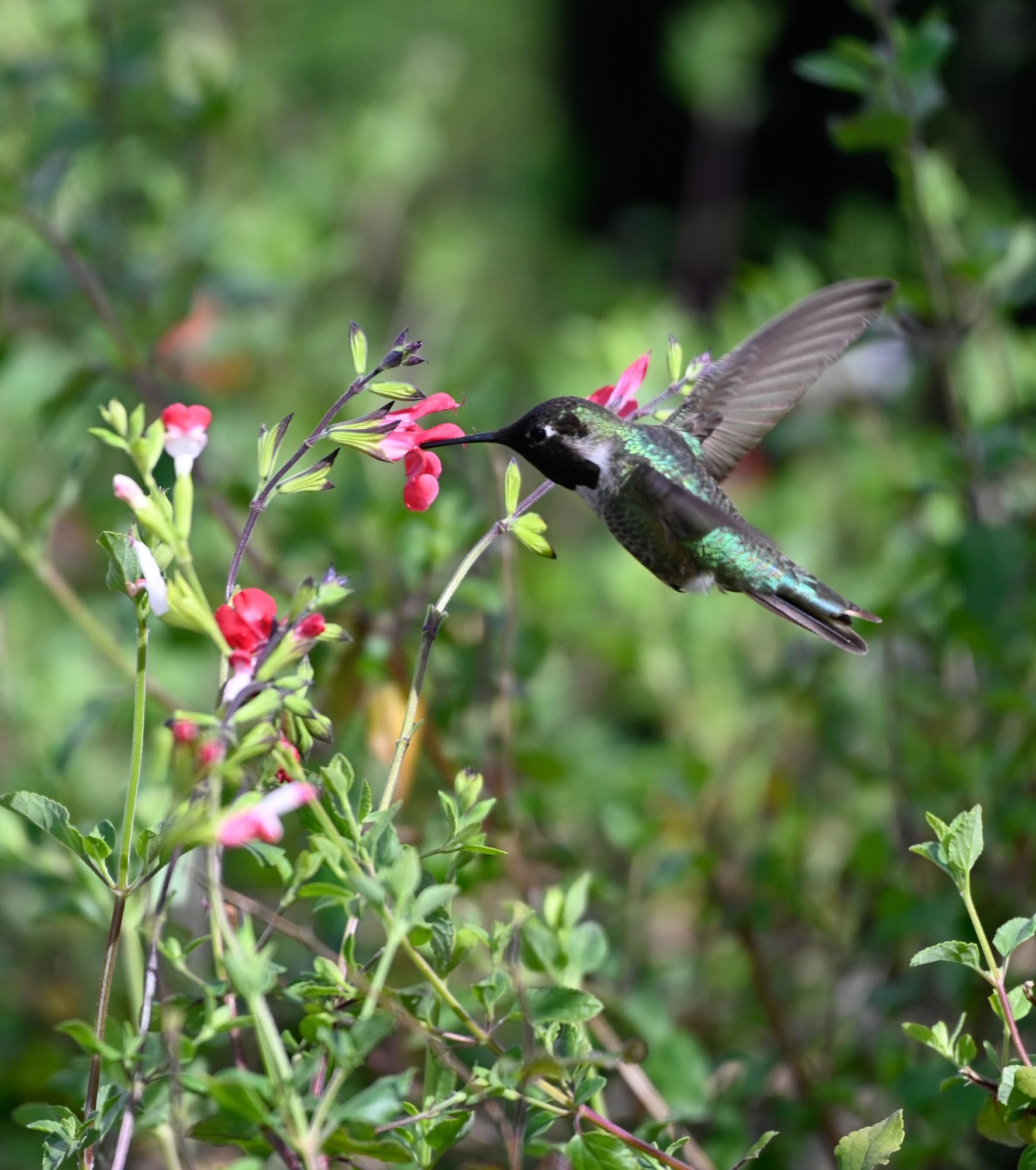
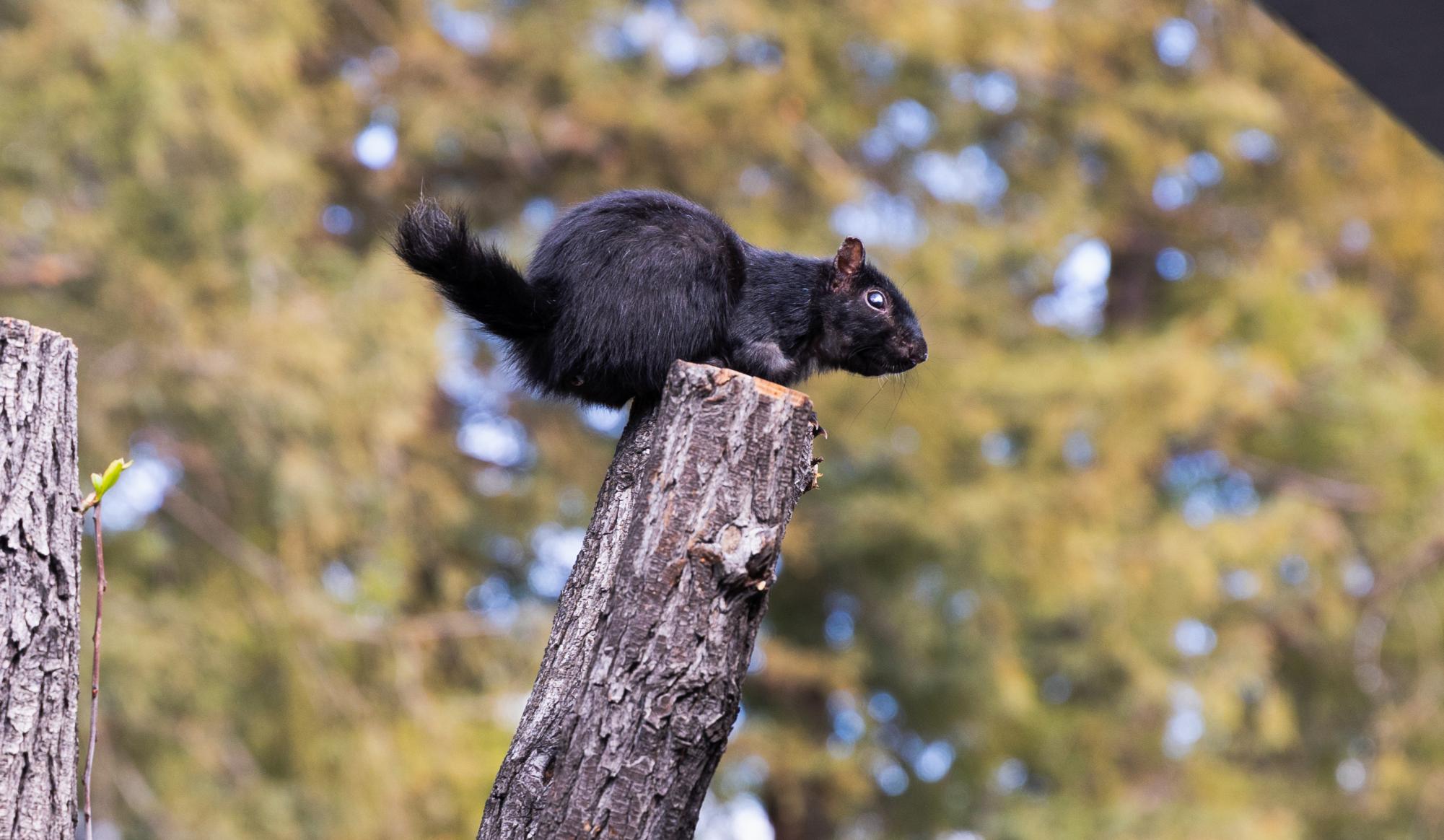
Eastern gray squirrels are commonly seen scurrying up and down trees, bringing fruits, seeds and nuts to and from their nests. Some rest on high stumps overlooking the Quad, keeping a watchful eye on their surroundings. Others dig through compost bins in search of discarded food, ready to scramble at a moment’s notice. During the spring, they climb up and down trees and build nests to raise their young. They also dig up acorns and nuts buried during previous year’s fall and forage for berries and seeds on the ground.
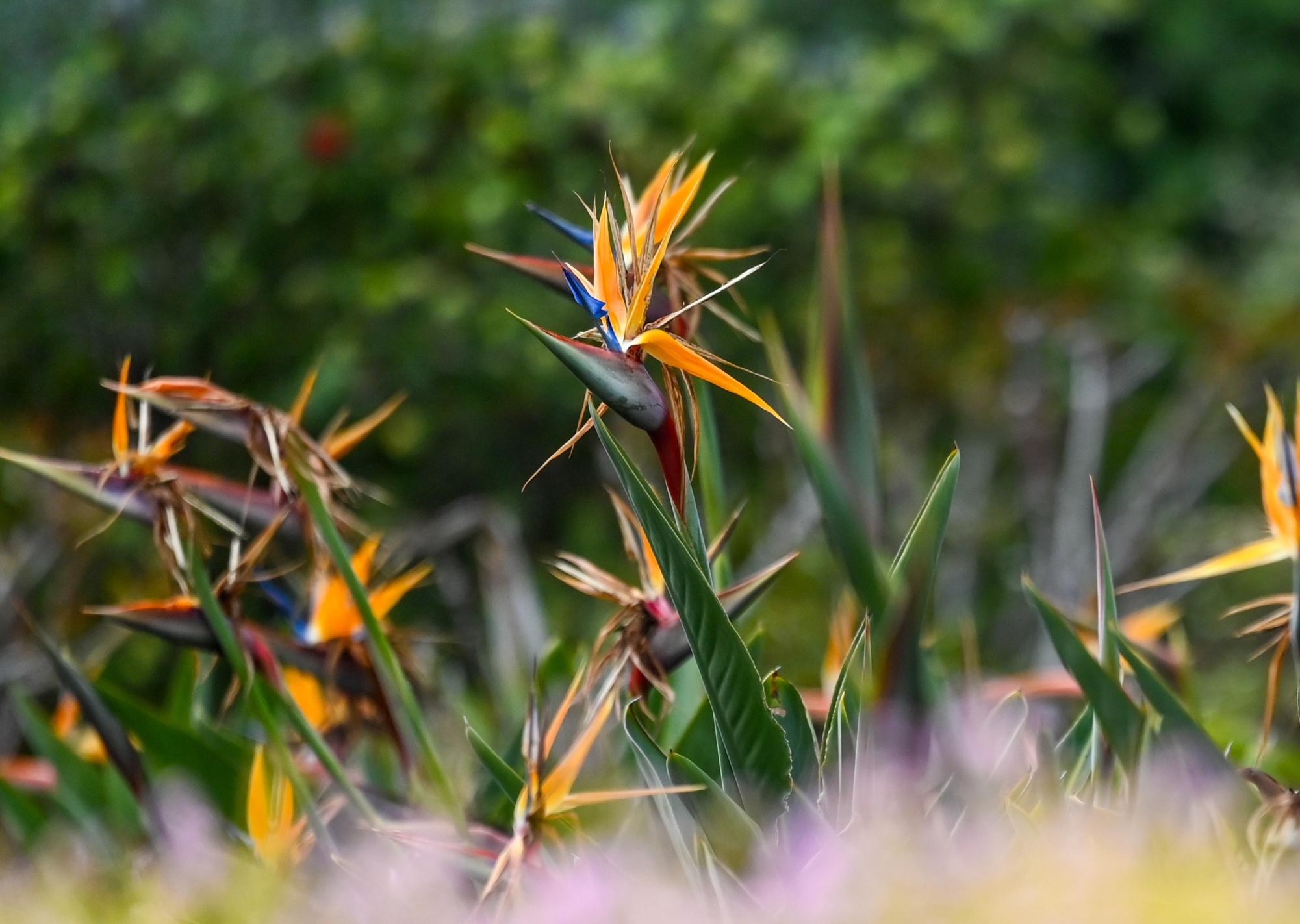
Bird of paradise is best known for its vibrant orange and blue flowers that resemble a bird in flight, which add bold colors to the Harker gardens. Its large, paddle-shaped leaves grow in a fan-like arrangement. A hardy plant, bird of paradise grows easily in warmer climates. In addition to being a popular ornamental plant around the world, the bird of paradise is also the official flower of the city of Los Angeles, symbolizing joyfulness and freedom.
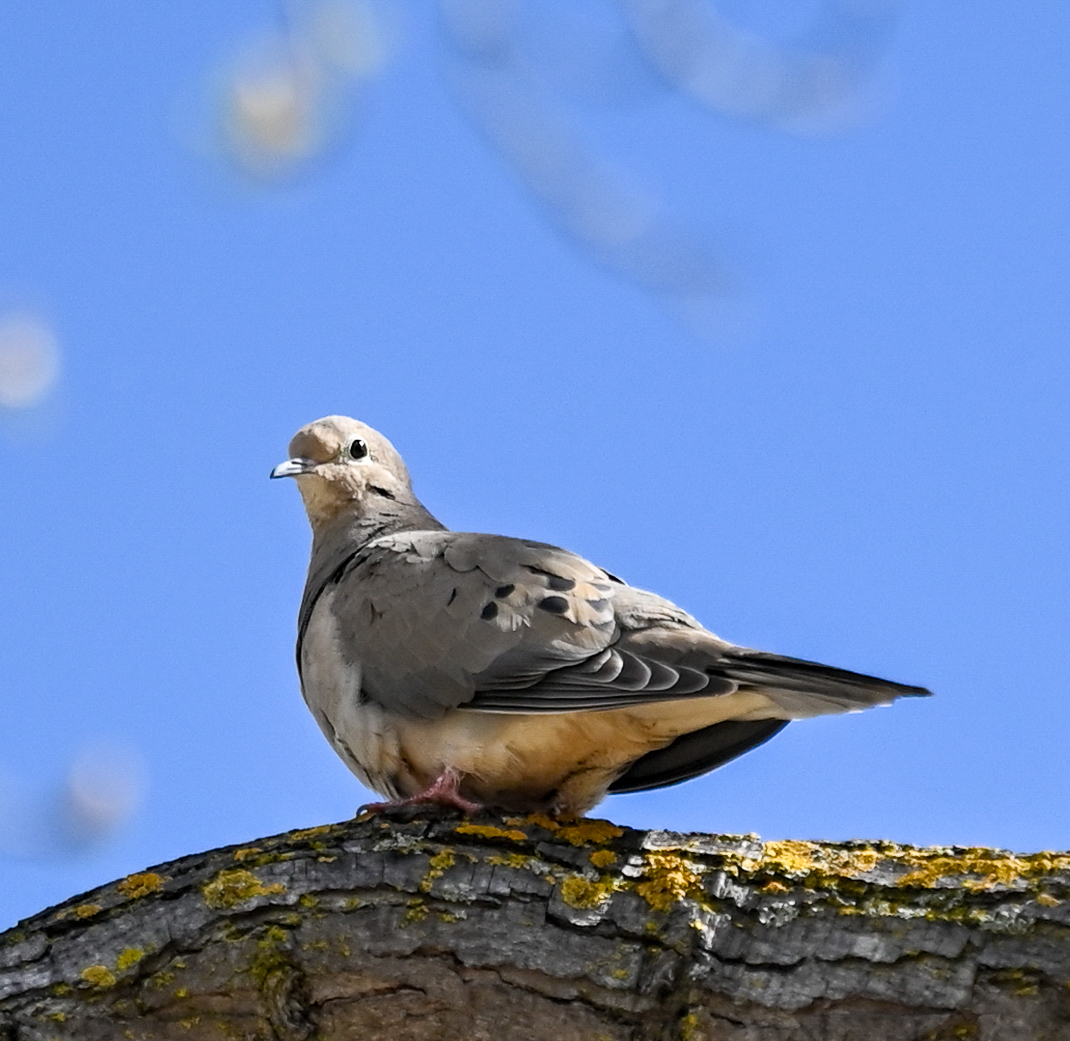
In tall treetops, mourning doves coo in search of potential partners. As one of the most abundant birds found throughout North America, they can be spotted all across the continent from southern Canada to Panama. Mourning doves are distinctly identifiable from their grayish-brown bodies, black spots on wings and distinctive doleful “coo-OO-oo” call. During the spring, they spend most of their time finding mates and building nests high in trees using twigs. Females lay two white eggs per brood, which hatch after two weeks.
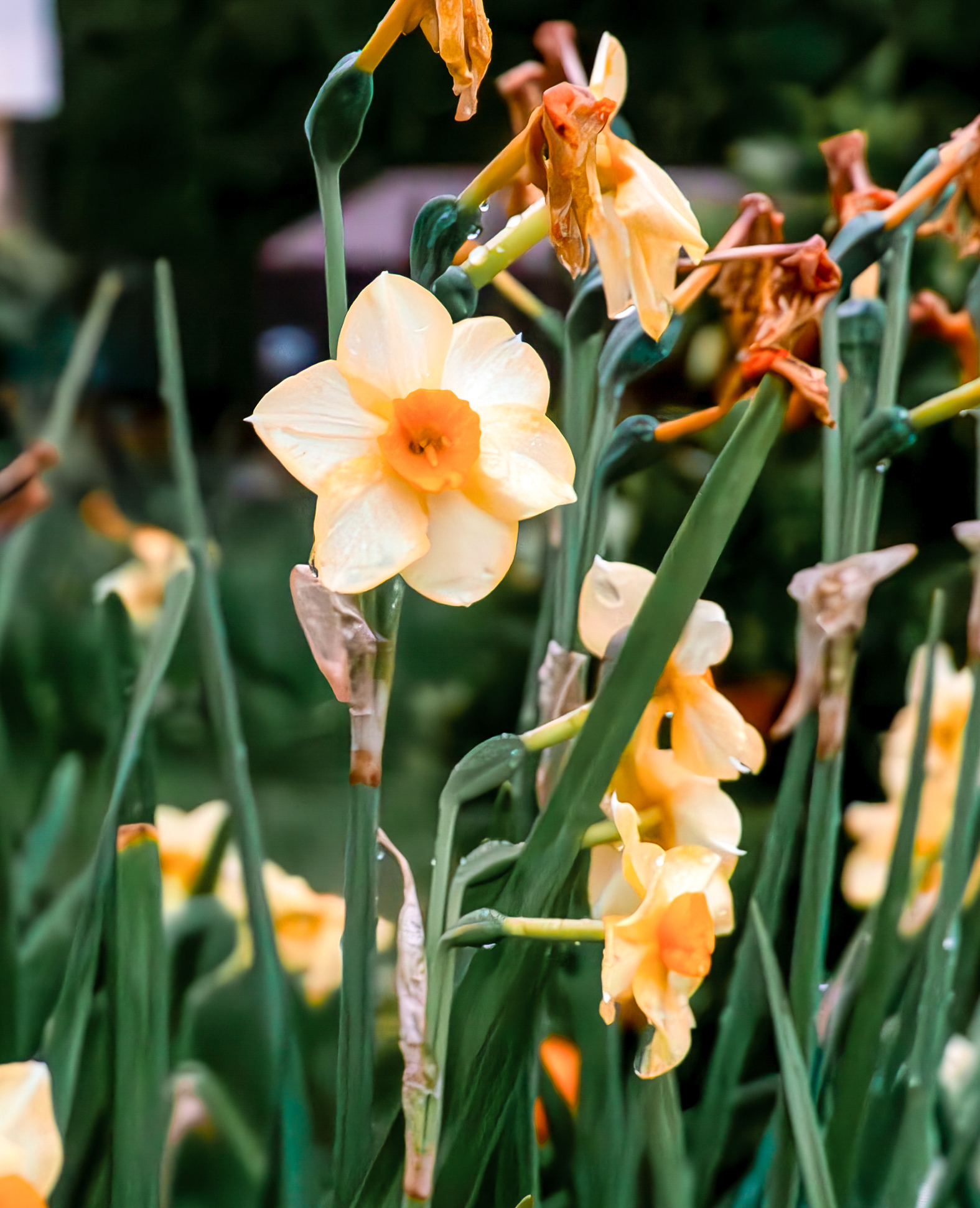
Bunch-flowered daffodil is a perennial that grows in partial shade or full sun. It originates in Mediterranean Europe and Africa. Both deer and rabbit resistant, bunch-flowered daffodils are hardy plants that are typically planted in the fall. Depending on the sturdiness, each stem can support from three to 20 flowers, best characterized by their white or yellow color. They typically require minimal care to thrive and bloom year after year.

Despite their name, the color of eastern gray squirrels range from black and brown to even white as a result of genetic mutations such as melanism, which causes dark fur, and albinism, which leads to white fur.
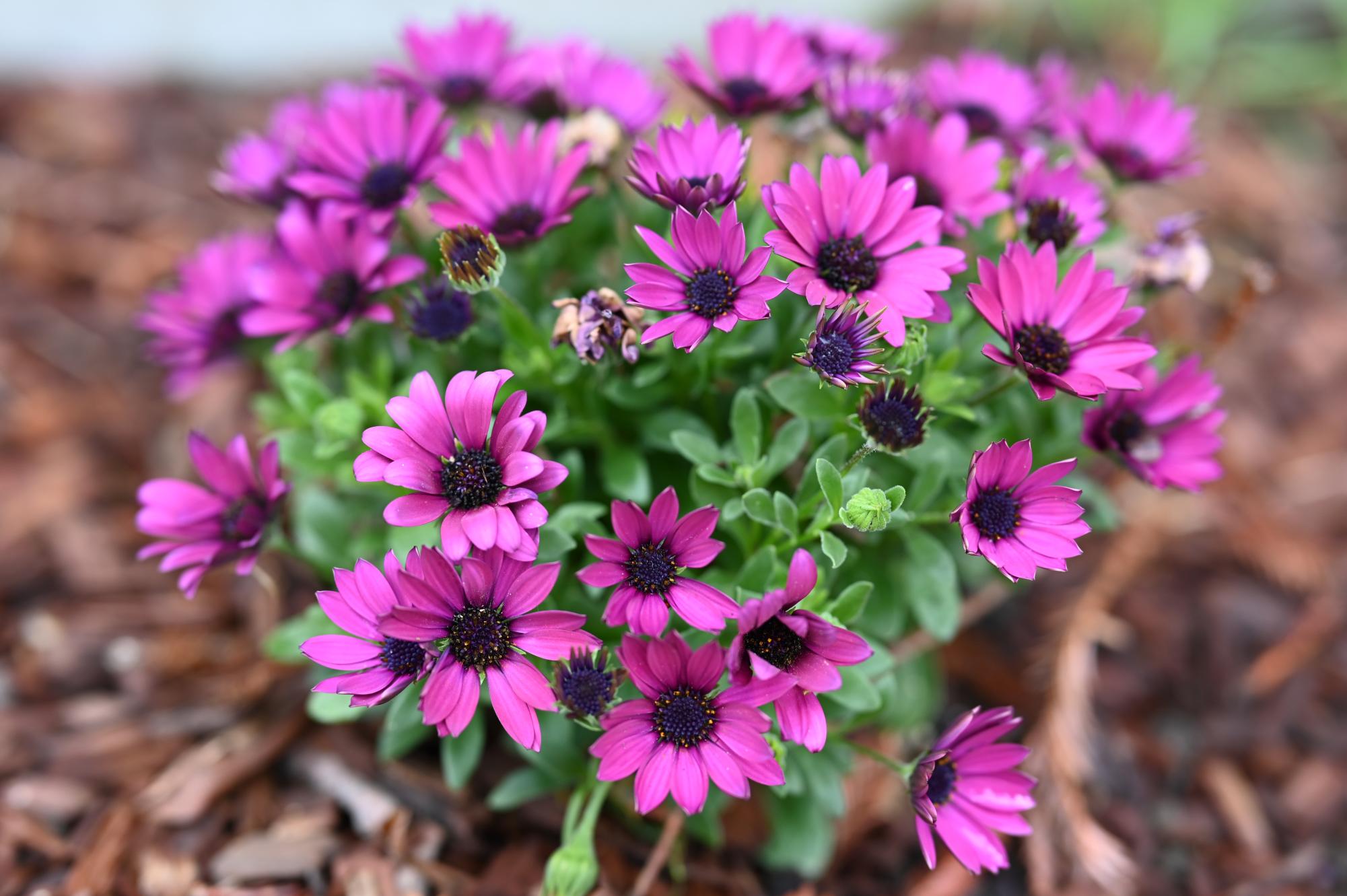
Cape Marguerite is a flowering plant native to South Africa. Seen outside the library and Main office, the plant thrives in sunny areas and is recognizable by its daisy-like blooms and vibrant purple color. Cape Marguerite is often planted for its long blooming season and ability to attract pollinators like bees and butterflies. Its flowers are known to open in sunlight and close at night or on cloudy days.

The dark-eyed junco is found throughout the entirety of North America, with its distinctive round head, long tail and small pink beak. They forage by jumping around in a double-hop scratch dance, first scraping their feet backward against the dirt to remove the surface layer of the soil and then forward to kick up seeds and insects hidden underneath. Male juncos mark the territory of their breeding ground and attract mates by singing high above the ground.

Star tickseed is a bright yellow flower native to the southeastern United States. The plant best flourishes in bright, partially shaded regions. Outside of the Harker campus, star tickseed is often found in fields, valleys, and rocky open woods. The plant can also self-seed, allowing it to spread naturally over time with little to no maintenance.
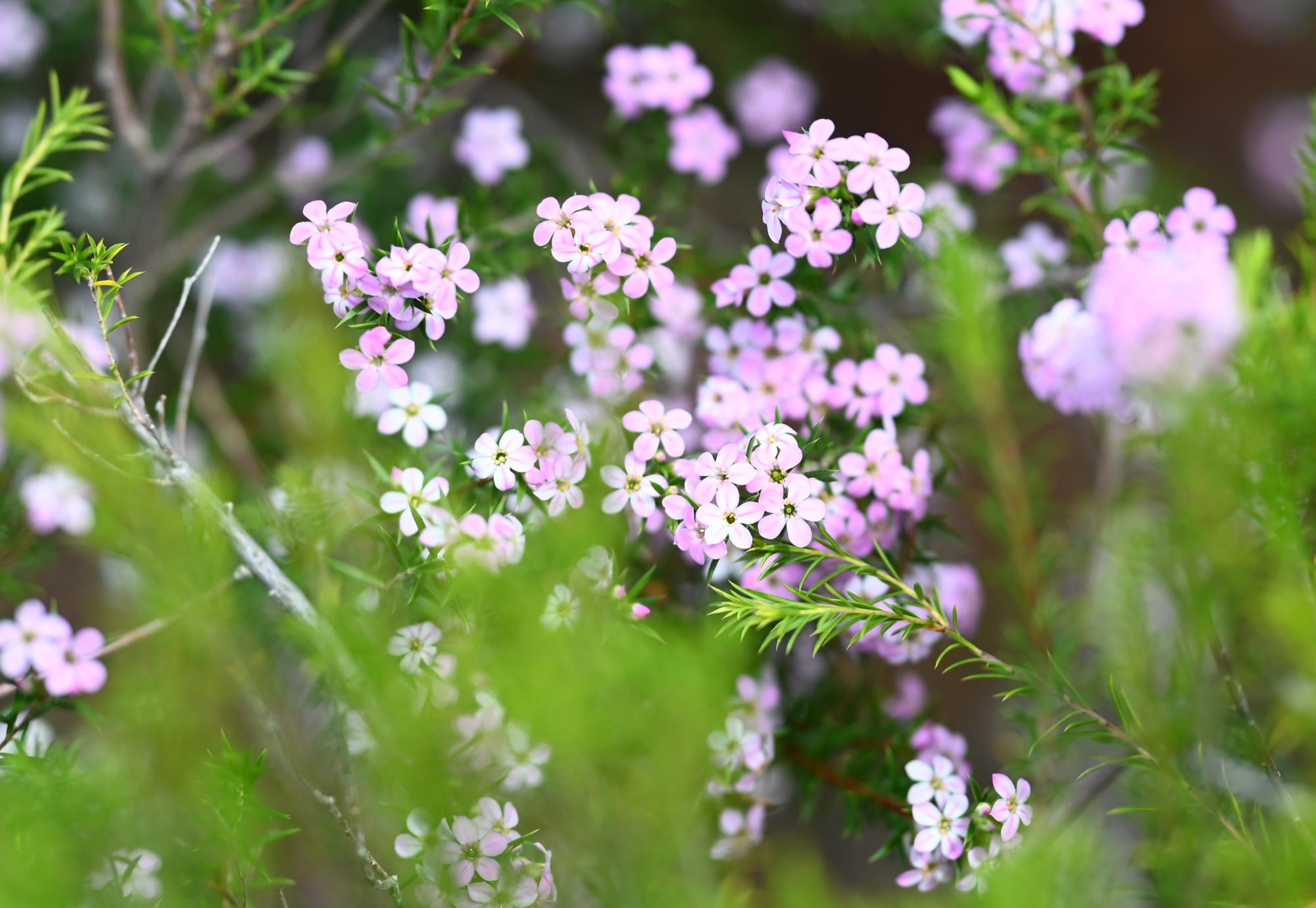
Breath of heaven is an evergreen shrub that develops small pink flowers. When brushed or touched, both the leaves and flowers release a sweet scent, hence the plant’s name. Located near the Orchard, breath of heaven grows as a small hedge and is able to be easily pruned. Able to tolerate wind, drought and other drastic conditions, the plant remains a staple in the Harker gardens.



